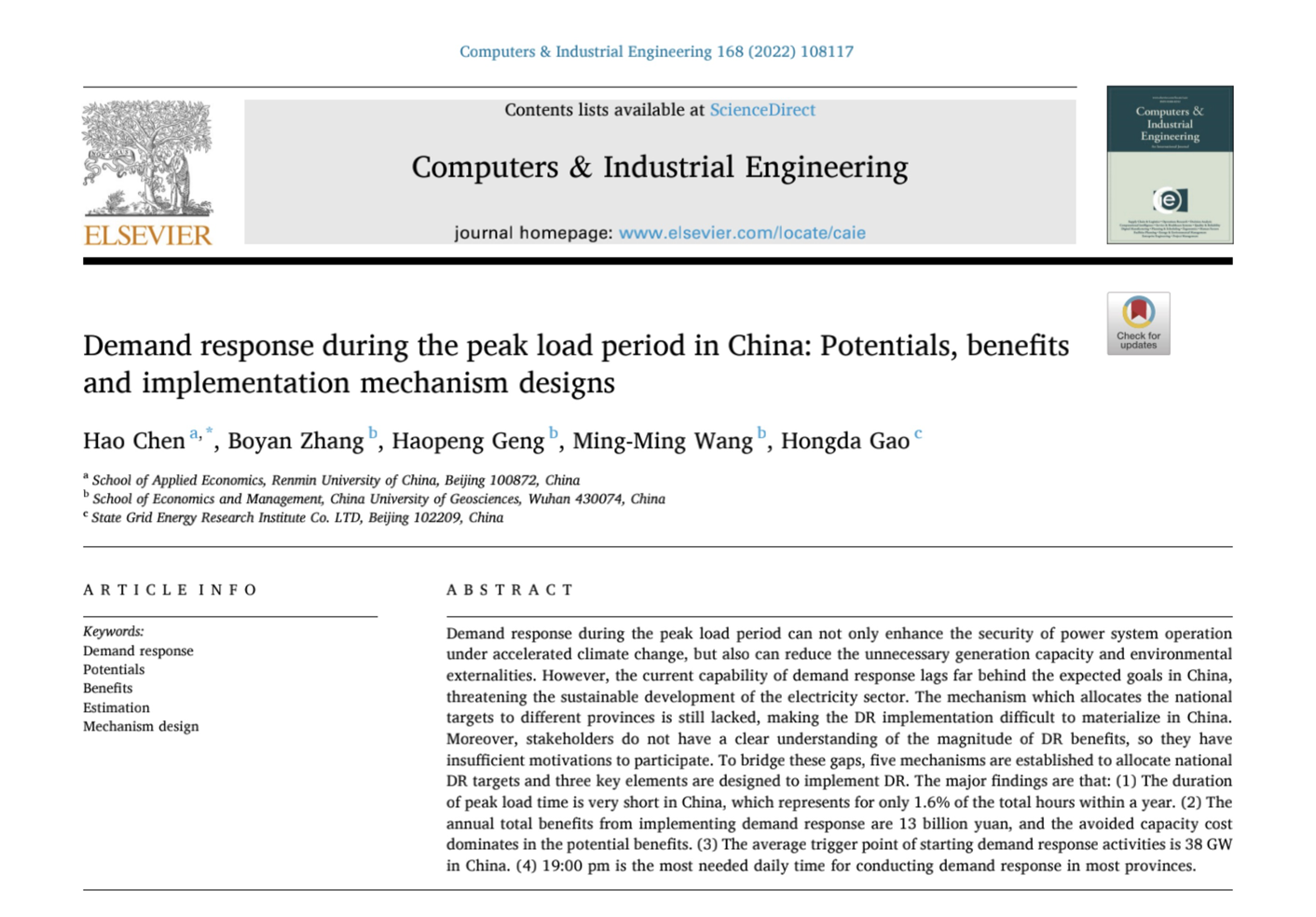Dr. Hao Chen recently had a paper published in the Computers & Industrial Engineering. The paper titled‘Demand response during the peak load period in China: Potentials, benefits and implementation mechanism designs’, was coauthored with Boyan Zhang,Haopeng Geng and Ming-Ming Wang from School of Economics and Management, China University of Geosciences, Hongda Gao from State Grid Energy Research Institute Co. LTD.

Abstract
Demand response during the peak load period can not only enhance the security of power system operation under accelerated climate change, but also can reduce the unnecessary generation capacity and environmental externalities. However, the current capability of demand response lags far behind the expected goals in China, threatening the sustainable development of the electricity sector. The mechanism which allocates the national targets to different provinces is still lacked, making the DR implementation difficult to materialize in China. Moreover, stakeholders do not have a clear understanding of the magnitude of DR benefits, so they have insufficient motivations to participate. To bridge these gaps, five mechanisms are established to allocate national DR targets and three key elements are designed to implement DR. The major findings are that: (1) The duration of peak load time is very short in China, which represents for only 1.6% of the total hours within a year. (2) The annual total benefits from implementing demand response are 13 billion yuan, and the avoided capacity cost dominates in the potential benefits. (3) The average trigger point of starting demand response activities is 38 GW in China. (4) 19:00 pm is the most needed daily time for conducting demand response in most provinces.
Other information
Publication Date:2022
Journal:Computers & Industrial Engineering
Journal Issue: 168(2022)
DOI: https://doi.org/10.1016/j.cie.2022.108117
Read the paper here.